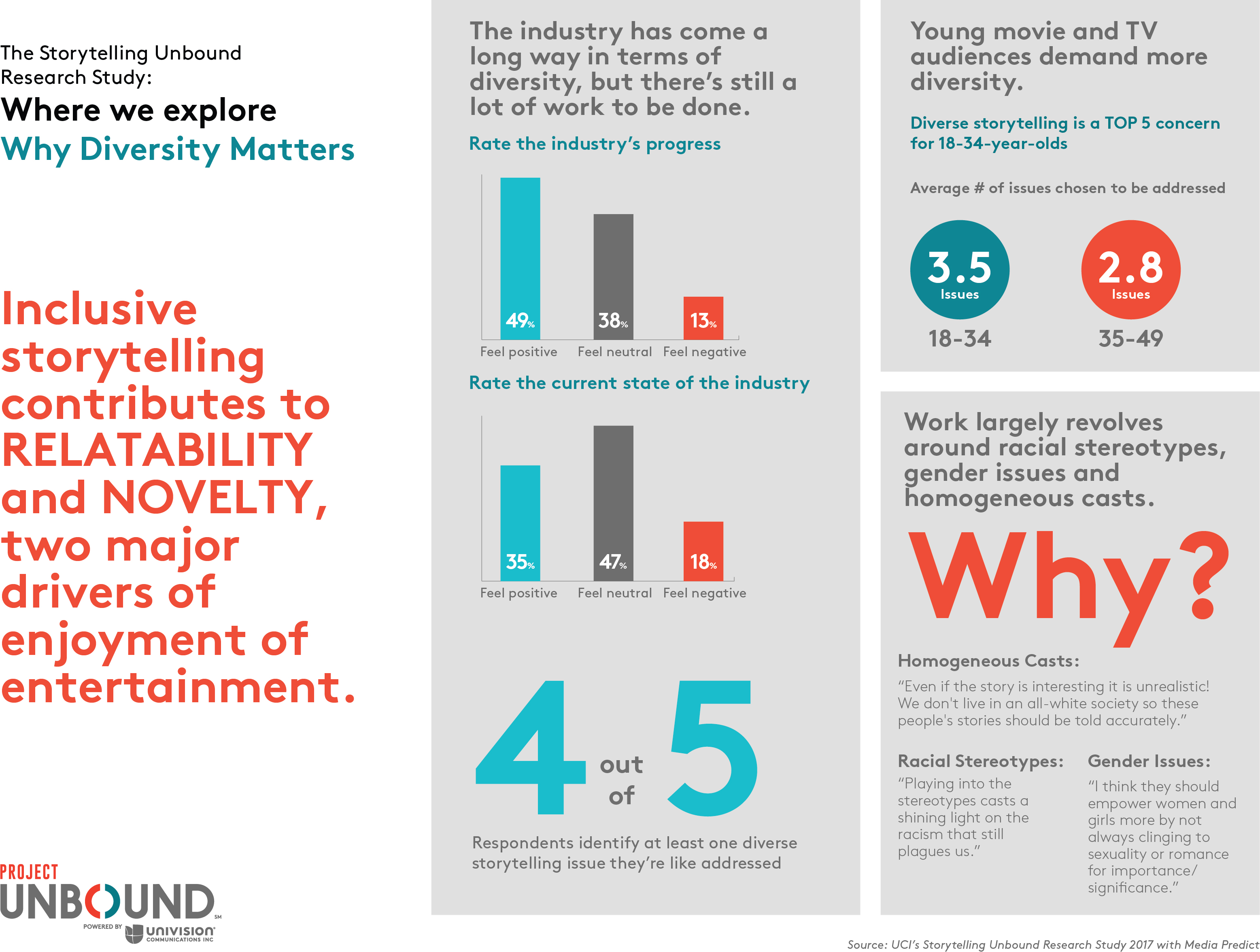When actor Riz Ahmed made the case for diversity in media and entertainment in front of Parliament, his video went viral. I had several people within and outside of UCI send it to me. I think it’s because his words rang so true.
He said: “We are in the representation business.”
I wholeheartedly agree. We are in the representation business and it’s not enough to say it, we must take action. And part of taking action involves understanding why diverse storytelling matters. This August, we worked with Media Predict to survey 2,000+ TV and movie audiences to get to the heart of the matter. We called it the Storytelling Unbound Research Study. Here’s what we found:

Diversity is key to good entertainment. It doesn’t only make something right; it makes something good. That’s because inclusive storytelling contributes to two major drivers of enjoyment of entertainment: relatability and novelty. Here’s what one respondent had to say about relatability: “Inclusive storytelling matters because it makes the story more real to me. It represents a makeup of people you are more likely to encounter in real life.”
We’ve come a long way, but there’s still a lot of work to be done. About half of respondents felt positive about the progress the industry has made; 38% felt neutral and 13% felt negative. However, when you flipped the question to ask for opinions on the current state of diversity in media, a different picture emerged; only 38% of total respondents felt positive. Overall, four out of five respondents identified at least one diversity issue that they wanted addressed.
That “work” largely revolves around racial stereotypes, gender issues and homogeneous casts. Total 18-49 respondents named racial stereotypes as the number one issue that needs to be addressed. Why? Because they normalize and perpetuate racism, inaccurately portray minorities and offer only repetitive and limiting roles. Female stereotypes and oversexualization of women were also cited as major issues, largely driven by non-Hispanic white women who expressed concern that these stereotypes hurt future generations and young girls. For the minority segments, homogeneous casts emerged as the number two issue. As one respondent said: “Even if the story is interesting, it is unrealistic! We don’t live in an all-white society so these people’s stories should be told accurately.”
Young movie and TV audiences are the most demanding. When we asked an unaided question about the one thing respondents would change about movies and TV today, the desire for more diversity popped up as a top 5 concern for young audiences. Youth across the board – whether representing minority populations or not – also called out more issues that needed to be addressed. On average, the 18-34 population cited 3.5 issues, while the 35-49 group landed at 2.8.
It’s clear that storytellers who want to ensure their relevance with future generations of customers must take heed – and take action – today.

